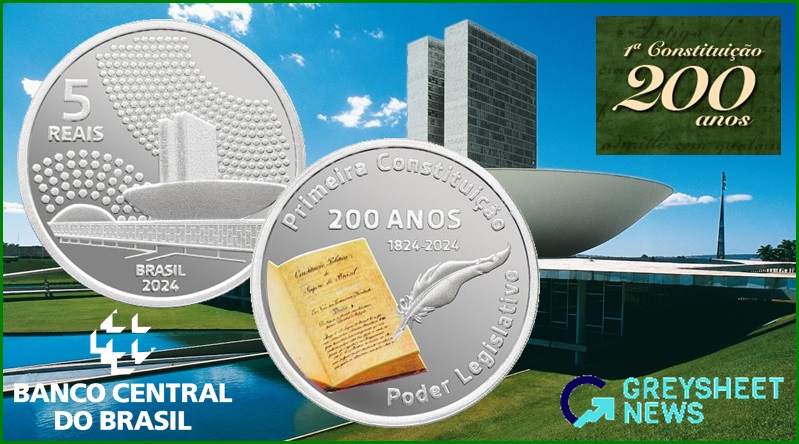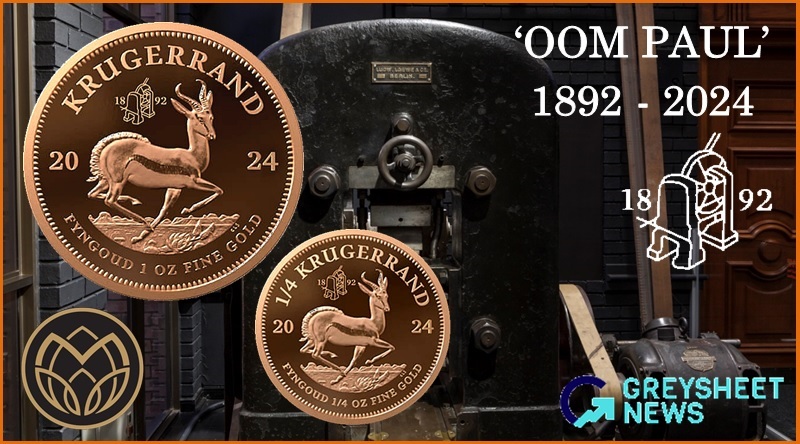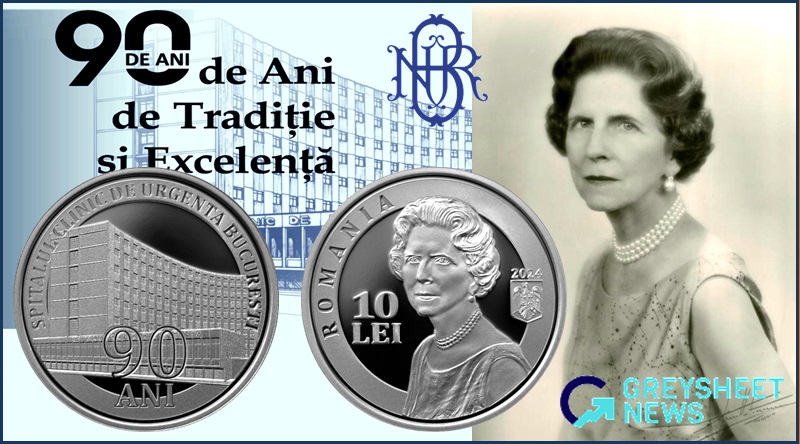Brazil: Bicentenary Anniversary of the Nation’s First Constitution Celebrated on New Silver Proof Coins
The Banco do Brasil have released new silver proof and colour coins which mark the bicentenary anniversary of the country’s first constitution.
Portugal’s history is intertwined from the discovery and incorporation of Brazil’s territory in 1500 until 1822 when the south American country proclaimed their independence. Brazil came closer to independence with the invasion of Napoleon and his army in 1807, as a result, Queen Maria I and her court moved to the-then Portuguese colony of Brazil in 1807. The Royal Court was officially situated in the city of Rio de Janeiro, which became the unofficial seat of the Portuguese Empire. In 1815, Portugal’s crown prince Dom John - later known as King John VI, while regent created the United Kingdom of Portugal, Brazil and the Algarves, which raised the status of Brazil from colony to kingdom. Queen Maria I became Queen of the United Kingdom of Portugal, Brazil and the Algarves. One year later upon the death of Maria I, Crown Prince John became King. With an end to the Peninsula War in 1814 and the defeat of Napoleon in 1815, Portugal’s new King returned to his homeland in 1821 leaving behind in Brazil his son and heir, Prince Dom Pedro, to rule Brazil as his regent.
Since the Portuguese government threatened to revoke the political autonomy that Brazil had enjoyed since the arrival of the Royal family, this was met with widespread discontent in Brazil. The Regent Pedro chose the Brazilian side and unilaterally declared Brazil's independence from Portugal on the 7th September 1822. On the 12th October, he was acclaimed Emperor of Brazil and by March 1824 his armies had defeated all armies loyal to Portugal.
On the 25th March 1824, the Constitution of the Empire of Brazil came into force, the first in Brazil’s history, which also gave rise to Brazilian constitutionalism. The constitution was given imperial ascent by Emperor Dom Pedro I, the Charter of 1824 established a hereditary constitutional monarchy in Brazil and was inspired by conservative liberalism, guaranteeing broad powers to the monarch. The 1824 Charter provided for four separate governmental powers such legislative, executive, judiciary and moderator, which was exercised by the Emperor and was placed above the other Powers. It also established an extensive list of individual rights, such as the right to equality and created the Supreme Court of Justice - currently the Federal Supreme Court. The 1824 constitution was in effect for 65 years, the longest-lasting in the country. With the fall of the monarchy in 1889, the 1891 Charter became the first Constitution to espouse the aspirations of the newly created republic. In addition to outlining the institutional bases of the new republic, the powers of the president and the federal system were defined. Since independence, Brazil has had seven Constitutions which includes the Charter of 1824, those of 1891, 1934, 1937, 1946, 1967 and the most recent and current revision of 1988.
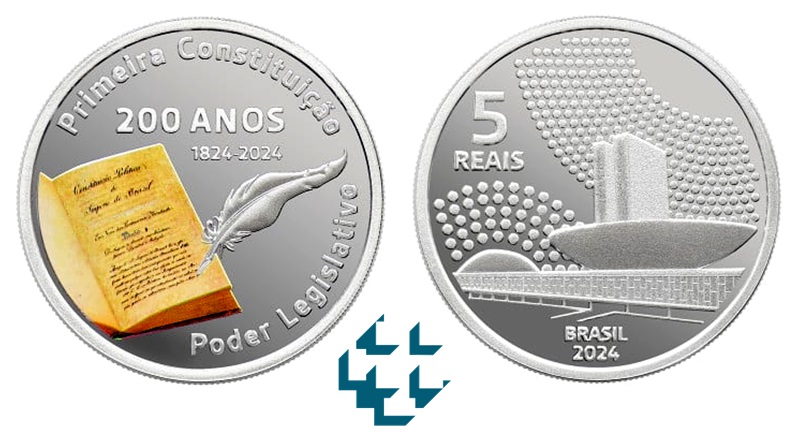
The proof quality coins are produced by the Casa da Moeda do Brasil, founded in 1694 at their facilities in Rio de Janiero and on behalf of the Banco do Brasil. The obverse side features the book of the first Brazilian Constitution, opened with its pages in sepia colour, symbolising the passage of time. The feather quill pen and the handwritten text evoke the way the text was written 200 years ago. It is the first time that the colour element is incorporated onto a silver coin in Brazil. The commemorative inscription placed above and below the primary design along the rim reads PRIMEIRA CONSTITUIÇÃO and PODER LEGISLATIVO (First Constitution Legislative Power) Above the illustration of the book and quill pen is the additional text 200 ANOS 1842-2024. The reverse side depicts the modernist style National Congress building, located in Brasilia and symbol of the country’s legislative Power. The architectural ensemble of the structure is composed of two domes, one facing upwards and the other downwards, representing the bicameral Legislative Power, a model proposed in the first Magna Carta of Brazil, with the two Chambers of deputies and senators which form the General meeting.
| Denomination | Metal | Weight | Diameter | Quality | Authorised Mintage |
| 5 Reais | .999 Silver | 28 Grams | 40 mm. | Proof & Colour | 10,000 Pieces |
Available from the 11th April, a consignment of 3000 pieces have been produced for distribution with a total authorised mintage of 10,000. For additional information including ordering, please visit the online webshop of the Casa da Moeda do Brasil.

Download the Greysheet app for access to pricing, news, events and your subscriptions.
Subscribe Now.
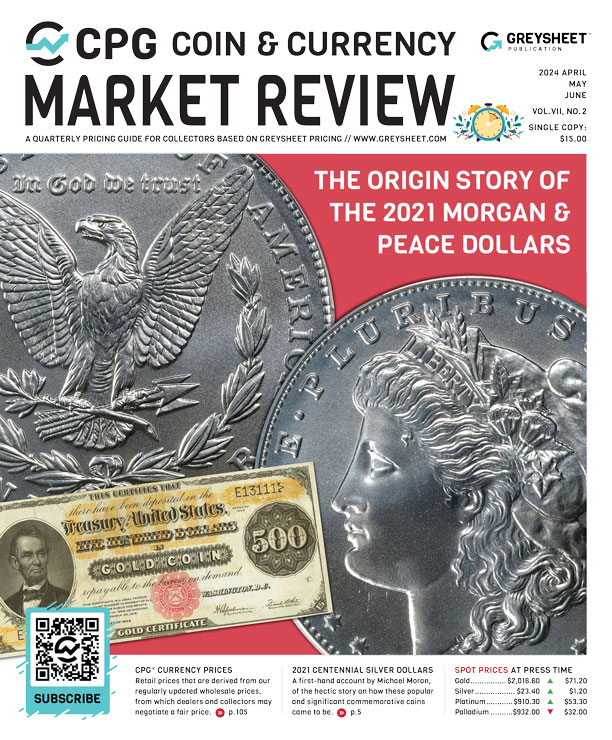
Subscribe to CPG© Coin & Currency Market Review for the industry's most respected pricing and to read more articles just like this.
Author: Michael Alexander


